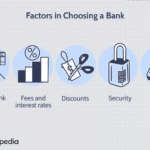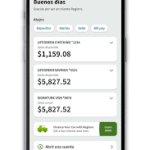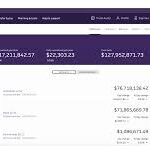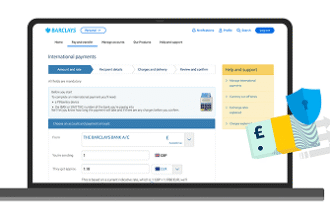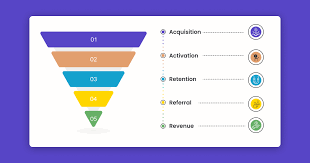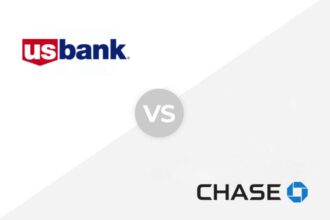The world of finance is undergoing a seismic shift, and private banking is at the epicenter. Gone are the days when exclusivity and brick-and-mortar presence were the sole pillars of attracting High-Net-Worth Individuals (HNWIs). Today, the digital revolution demands a sophisticated, technology-driven approach. HNWIs, despite their affluence, are increasingly digitally adept, expecting seamless, personalized, and secure experiences across all touchpoints. This evolution necessitates a fundamental rethink of marketing strategies within the private banking sector.
This comprehensive guide explores the critical digital marketing strategies required for modern private banking firms aiming to capture and retain the loyalty of discerning HNWIs. We’ll delve into understanding the modern HNWI, leveraging technology, crafting personalized digital experiences, and building trust in an increasingly complex financial landscape. Whether you’re refining your digital banking strategy or exploring new avenues beyond traditional personal banking, these insights are crucial for navigating the future. We’ll touch upon various facets of the banking world, from investment banking insights to the nuances of business banking, all viewed through the lens of attracting significant clientele.
1. The Shifting Landscape: Why Digital Transformation is Non-Negotiable
Traditional private banking often relied on personal relationships, exclusivity, and a curated image of stability. While these elements remain important, the digital age has reshaped client expectations and operational possibilities.
- The Rise of the Digitally Savvy HNWI: Today’s HNWIs are not intimidated by technology. They use mobile banking apps for daily transactions, research investments online, and expect their financial partners to offer sophisticated online banking platforms. They value convenience, speed, and access, often demanding services comparable to the best consumer tech experiences. Think about the ease of using apps like Chase online or the comprehensive features offered via PNC online banking or Bank of America online banking – HNWIs expect similar levels of user-friendliness and capability for their wealth management needs.
- Beyond Basic Online Services: Basic online banking is table stakes. HNWIs seek advanced digital platforms offering wealth management dashboards, real-time market data, secure communication channels, personalized financial planning tools, and potentially integration with other services through concepts like open banking. Banks like Wells Fargo banking and Truist online banking are continuously enhancing their digital offerings to meet these evolving demands.
- Data as the New Currency: The digital realm generates vast amounts of data. Effectively harnessing this data through analytics and AI allows private banks to understand client behavior, anticipate needs, personalize offerings, and manage risk more effectively. This moves beyond generic personal banking or business banking approaches to highly tailored wealth management solutions.
- The Competitive Pressure: Fintech startups and challenger banks are entering the wealth management space, often with superior digital-native experiences. Established players, including those offering robust commercial banking services, must innovate or risk losing market share. Even established names like PNC, Chase banking, and Regions Online Banking face competition from nimble digital players.
- Global Reach & Accessibility: Digital banking allows private banks to transcend geographical boundaries, serving HNWIs wherever they are. This is crucial for clients with international assets or those seeking global investment opportunities, potentially requiring services like RBC Cross Border Banking.
Source: Capgemini World Wealth Report (Annual reports provide extensive data on HNWI behavior and preferences).
2. Understanding the Modern High-Net-Worth Individual (HNWI)
To craft effective marketing strategies, a deep understanding of the target audience is paramount. The modern HNWI is not a monolithic entity, but general characteristics guide effective engagement:
- Tech-Savvy & Informed: They research extensively online, follow market trends, and often use multiple digital tools for managing their finances. They appreciate transparency and readily available information, including timely banking news.
- Value Personalization: While they embrace digital tools, they still crave personalized advice and human interaction, albeit delivered more efficiently. They expect their bank to know their specific circumstances, goals, and preferences. This goes beyond a standard banking account; they need tailored wealth strategies.
- Seek Holistic Financial Solutions: HNWIs often require complex services encompassing investment management, estate planning, tax advisory, philanthropic services, and credit solutions. They look for a trusted advisor, not just a service provider. This bridges personal banking with investment banking and specialized advisory.
- Interested in ESG & Impact Investing: A growing segment of HNWIs prioritizes Environmental, Social, and Governance (ESG) factors in their investment decisions. Marketing messages and product offerings should reflect this growing awareness.
- Time-Constrained: Their wealth often correlates with demanding schedules. Digital channels offer a way to interact efficiently, accessing services like mobile banking or secure messaging without needing to visit a branch or schedule lengthy meetings.
- Security-Conscious: Trust and security are paramount. HNWIs are prime targets for sophisticated fraud. Robust cybersecurity measures and clear communication about data protection are essential selling points, especially contrasted against opaque systems like shadow banking.
Source: Knight Frank Wealth Report (Provides demographic and psychographic insights into HNWIs globally).
3. Core Digital Marketing Strategies for Private Banks
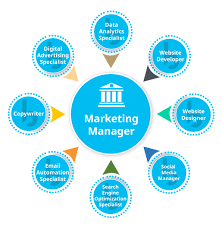
Attracting HNWIs in the digital age requires a multi-faceted strategy that blends sophisticated technology with personalized engagement.
a) Hyper-Personalization Through Data Analytics & AI
Generic marketing blasts are ineffective. Private banks must leverage data to deliver highly personalized experiences:
- Client Segmentation: Move beyond simple demographics. Utilize behavioral data, transaction history, investment preferences, and life stages to segment clients granularly.
- Predictive Analytics: AI algorithms can predict future client needs, such as potential requirements for lending, investment opportunities, or estate planning services based on analyzed patterns.
- Personalized Content Delivery: Deliver relevant market insights, investment opportunities, and financial planning articles directly to clients based on their profile and interests via secure portals or targeted emails. Imagine receiving specific insights relevant to your portfolio, rather than generic market commentary.
- AI-Powered Chatbots & Virtual Assistants: Use AI for initial client interaction, answering frequently asked questions, scheduling appointments, and providing basic information 24/7, freeing up human advisors for complex tasks. This enhances the efficiency of platforms like umb online banking or cadence online banking.
b) Sophisticated Content Marketing
Content is king, especially when providing high-value insights to sophisticated clients:
- Thought Leadership: Publish in-depth white papers, market analysis reports, economic forecasts, and commentary on regulatory changes. Position the bank as a trusted source of expertise. This includes analysis relevant to investment banking trends and broader banking news.
- Educational Resources: Create webinars, videos, and articles explaining complex financial concepts, investment strategies, tax planning nuances, and wealth preservation techniques. Address topics relevant to both individuals and business banking clients.
- Success Stories & Case Studies (Anonymized): Showcase how the bank has helped clients achieve specific financial goals (e.g., successful business exit, intergenerational wealth transfer, philanthropic endeavors).
- SEO Optimization: Ensure all content is optimized for relevant keywords. This includes terms like
private banking,HNWI wealth management,digital banking solutions,investment strategies, and specific service-related terms likeonline banking accountsetup or benefits of using your bank’s specific mobile banking app.
Source: McKinsey & Company – “The Future of Digital Banking” (Regularly publishes research on digital transformation in finance).
c) Seamless Omnichannel Experience
HNWIs interact with their bank through various channels – website, mobile banking app, email, phone, and sometimes in person. The experience must be consistent and integrated:
- Unified Client View: Ensure that advisors have access to a complete client profile, regardless of the channel the client uses. Information updated via PNC banking online should be visible to the relationship manager.
- Responsive Web & Mobile Design: Websites and apps must be intuitive, fast, and accessible across all devices. The user experience on chase.com online or regions.com online banking should be top-tier.
- Secure Communication: Offer secure messaging platforms within the online portal or mobile banking app for confidential communication, replacing less secure email or phone calls for sensitive matters.
- Cross-Channel Integration: Allow clients to start a process on one channel and complete it on another (e.g., start an account opening online, finish with a relationship manager). This applies whether the client primarily uses digital banking, internet banking, or traditional channels.
d) Leveraging Digital Advertising Strategically
Targeted digital advertising can reach potential HNWI clients effectively:
- Professional Networks: LinkedIn is invaluable for targeting professionals based on industry, job title, seniority, and company size, making it ideal for reaching potential business banking or private clients.
- Financial News Outlets: Advertise on reputable financial news websites (e.g., Wall Street Journal, Bloomberg, Financial Times) where HNWIs often seek information.
- Search Engine Marketing (SEM): Bid on relevant keywords related to private banking services, wealth management, and investment opportunities. This captures individuals actively searching for solutions. Ensure keywords like
private banking advisor,HNWI investment services, andoffshore banking(if applicable) are considered. - Programmatic Advertising: Utilize data platforms to target specific audience segments with tailored ad creatives across the web.
e) Building Trust Through Digital Channels
Trust is the bedrock of private banking. Digital channels must actively reinforce this:
- Cybersecurity Transparency: Clearly communicate the bank’s security measures, encryption standards, and fraud prevention strategies. Highlight compliance with regulations.
- Data Privacy Policies: Provide clear, accessible information about data usage and privacy protections.
- Digital Reputation Management: Monitor online reviews and social media mentions. Address negative feedback promptly and professionally. Ensure platforms like m&t bank online banking are perceived as reliable and secure, learning from past issues like potential m&t bank mobile banking down incidents elsewhere.
- Testimonials & Endorsements: Feature testimonials from satisfied clients (with permission) on digital platforms.
f) Exploring Emerging Technologies
Stay ahead of the curve by exploring and potentially integrating:
- APIs & Open Banking: Utilize open banking APIs to integrate third-party financial tools or provide clients with a consolidated view of their finances across institutions. This could enhance offerings beyond a single bank’s banking account management.
- Blockchain: While still evolving, explore potential applications in secure record-keeping, transaction verification, or digital identity management.
- Advanced Analytics: Implement AI and machine learning for deeper client insights, enhanced risk management, and hyper-personalized service recommendations.
4. Integrating Specific Banking Needs and Keywords
The core strategies above apply broadly, but integrating specific terms and contexts adds depth and relevance, potentially capturing niche searches.
- Platform Comparisons (Use Generic Language): While direct comparisons are risky, discussing the importance of features found on leading platforms can be useful. For instance, emphasize the need for robust security and user-friendly interfaces, citing the general availability of features like those found on PNC banking, Chase banking, Wells Fargo banking, or online banking Bank of America. Mention the convenience of features like Chase online or PNC online banking.
- Reliability & Uptime: Discuss the critical nature of reliable digital services. Reference industry awareness around issues like potential M&T Bank online banking issues or M&T bank mobile banking down incidents as examples of why consistent uptime and robust infrastructure are non-negotiable for HNWIs who rely on immediate access. This underscores the value proposition of dependable online banking, internet banking, and mobile banking solutions.
- Account Management: Highlight the ease of managing different types of accounts, from a basic banking account to complex investment portfolios, through streamlined online banking account portals. Whether it’s personal banking or business banking, the digital interface matters.
- Specific Services: Discuss the integration of various services. For example, how business banking clients might use online platforms for cash flow management, international payments (perhaps mentioning services like RBC Cross Border Banking), and payroll, while personal banking clients focus on wealth growth and legacy planning.
- Navigating Holidays: Mention the importance of uninterrupted service. Clients need access to their funds and accounts regardless of banking holidays. Discussing foresight, like preparing for banking holidays 2025, shows client-centric planning. Reference the need to know is today a banking holiday in the context of transaction planning and the reliability of digital access versus physical branch closures.
- Niche Concepts:
- Velocity Banking: Briefly explain concepts like velocity banking as an advanced cash-flow management strategy that sophisticated clients might explore, and how private banks can offer guidance or tools.
- EFT Meaning: Clarify EFT meaning in banking (Electronic Funds Transfer) in the context of secure, efficient digital money movement capabilities offered by modern banks.
- Shadow Banking: Contrast the regulated, secure environment of traditional and digital banking with the less regulated world of shadow banking. Explain why HNWIs value the stability and oversight provided by established institutions, especially during times of banking crisis or discussions about bad loans in the banking industry. Define what is shadow banking briefly to highlight the distinction.
- Regional Focus (Example: Australia): Group keywords relevant to specific regions. For Australian banks like ANZ banking, Westpac banking, NAB banking, or Suncorp, discuss how their internet banking platforms cater to local HNWI needs. Mention specific features or login processes like anz internet banking login, westpac login, nab login, or suncorp internet banking. Discuss the integration of services like Commonwealth Bank online banking or St. George internet banking. Touch upon business banking offerings from entities like Bank of Melbourne business banking. Reference potential unique needs or programs like Centrelink cash boost 2025 as examples of financial events requiring sophisticated advice. Mention Bendigo bank e banking login or GMCU internet banking as examples of regional players adapting.
- US Regional Focus (Example: PNC/Regions/M&T etc.): Integrate keywords naturally. Discuss how clients might use www.pncbank.com online banking for their needs, compare the digital features generally offered by PNC banking, Chase banking, Regions Online Banking, Wells Fargo banking, or Online banking Bank of America. Mention the importance of reliable platforms like Truist online banking and umb.com online banking. Reference specific bank instances like M&T bank and the importance of their digital channels functioning smoothly. Discuss the distinct needs met by commercial banking versus personal banking through digital interfaces.
- Jobs: Briefly note that implementing these strategies requires skilled professionals, creating opportunities in areas related to banking jobs, particularly in digital marketing, data science, cybersecurity, and client relationship management within the finance sector.
5. The Indispensable Human Touch: Blending Digital and Advisory
Despite the digital push, private banking remains a relationship-driven business. The key is blending digital efficiency with high-touch advisory:
- Empowered Relationship Managers: Equip relationship managers with advanced digital tools, client data insights, and communication platforms to enhance their interactions.
- Hybrid Service Models: Offer clients the choice of how they interact. Some may prefer managing investments primarily through a sophisticated online banking account portal, while others value regular face-to-face or video consultations.
- Proactive Outreach: Use data insights to prompt proactive outreach from relationship managers. For example, alert a client about a market event relevant to their portfolio or suggest a meeting to discuss upcoming banking holidays impact.
- Concierge Services: Digital channels can facilitate concierge services, from booking advisory meetings to providing seamless access to specialized expertise (e.g., tax, legal, international banking).
6. Measuring Success: Beyond Traditional Metrics
Measuring the effectiveness of digital marketing strategies requires looking beyond simple client acquisition numbers:
- Client Acquisition Cost (CAC): Track the cost to acquire new HNWI clients through digital channels.
- Client Lifetime Value (CLV): Understand the long-term value generated by digitally acquired clients.
- Assets Under Management (AUM) Growth: Monitor the growth in AUM, particularly from clients acquired or engaged through digital strategies.
- Client Engagement Metrics: Track usage of digital platforms (logins, feature usage), content engagement (downloads, views), and interaction rates.
- Net Promoter Score (NPS): Measure client satisfaction and willingness to recommend, often segmented by digital vs. traditional engagement.
- Share of Wallet: Assess the proportion of a client’s total financial assets managed by the bank. Digital engagement can often lead to increased wallet share.
7. Conclusion: The Future is Digital, Personal, and Secure
The successful private bank of the future will be one that masterfully blends cutting-edge digital capabilities with deeply personalized, trust-based relationships. Marketing strategies must reflect this reality, focusing on delivering exceptional value through data-driven insights, seamless omnichannel experiences, and unwavering commitment to security.
By embracing digital banking, leveraging tools from mobile banking to advanced AI, and understanding the nuances of serving HNWIs – whether they need simple online banking account management or complex investment banking advisory – private banks can not only attract but also retain the loyalty of this crucial clientele. Continuous adaptation, investment in technology, and a client-centric approach are the keys to thriving in the digital age of private banking. From the foundational aspects of business banking and personal banking to the specialized needs of the affluent, digital transformation is the pathway forward. Banks like PNC, Chase, Regions, Wells Fargo, Bank of America, Truist, ANZ, Westpac, NAB, and others are all navigating this path, constantly refining their strategies to meet the evolving demands of the modern HNWI.





